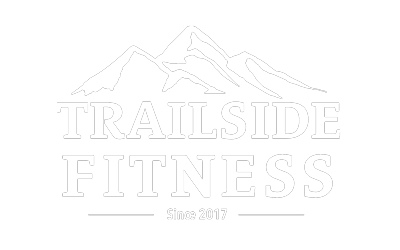The best exercises to train for hiking aren’t found in popular hiking magazines. I recently had a chance to look through a really popular hiking magazine that talked about America’s long distance trails. With great excitement I looked inside the magazine and came across some advice on training for a long distance hike. My excitement quickly turned to great disappointment as a hiker and as a personal trainer. Listed were four questionable exercise choices set up in a circuit you would do twice a week.
A hiker new to exercise or one in their 40’s or 50’s wouldn’t be very comfortable doing some of the suggestions. That’s a large swath of hikers looking to cover miles on America’s scenic trails.
I looked through the exercises and they completely missed the mark for hikers. Not only were the exercises the wrong type of exercises, they were just not well thought out. A hiker new to exercise or one in their 40’s or 50’s wouldn’t be very comfortable doing some of the suggestions. That’s a large swath of hikers looking to cover miles on America’s scenic trails.
I’m going to go through what was good about the exercises, what was bad about them, and what options would be better for you instead.
Exercises for hikers and better options
The first exercise they had was ball slams. This is a great full-body exercise that targets the legs, core, shoulders and arms. It also gets the heart pumping quickly. Ball slams are a great exercise and might be a really great option if you’re limited on time, but not for hike training.
The best exercises are usually the basics
The second exercise listed was leg presses. This is a great exercise for people that are less familiar with some gym equipment like free weights. The machines are a little bit easier for beginners and sometimes feel safer, which is justified. You can do a single leg or a double leg version on the machine which is really great for isolating single leg strength. This can help eliminate imbalances that can lead to injury.
The problem is that you never in life need to sit and then push something away from you in this manner. And that doesn’t look anything at all like you would do in hiking so not really a great fit. It’s probably just a popular option since most people have access to it at the gym and it does target the legs well.
However, a better option for you is going to be any kind of a squat: front squat, goblet squat, Spanish squats, or barbell squats variations. Single leg exercises like lunges are also a good alternative. These are much better alternatives for your time in the gym.
Training for hiking will look different for everyone
The crab walk. This exercise was listed and I’m guessing it’s more for the core aspect. While this is a fair core exercise, it’s about the only benefit that I could come up with. There’s plenty of things that make this exercise hard. For starters you need some flexibility to make this exercise work. If you have shoulders that are irritable or you have poor mobility in your hips, tight quad muscles or a stiff mid-back, this exercise is just not going to work for you.
If you’re sitting in a desk for the majority of your day or you find yourself fairly sedentary, the crab walk is not really going to give you any benefit for hiking.
A better option would be a plank or any plank variation. Even a push up into a plank position would be good or a dynamic plank. A dynamic plank has a bit of a rotation and a reach during the hold. Even a single arm, single leg plank fit well here for a dynamic element. Other options would be dead bugs or bird dogs.
Just because a magazine features it doesn’t mean it’s right!
The last exercise the magazine listed was box jumps. This is great for leg and hip strength and great for glutes as well. However, they can be problematic for Achilles tendons and calf issues. So if you’ve got a history of plantar fasciitis or calf issues box jumps may not really a good fit.


Recent Comments